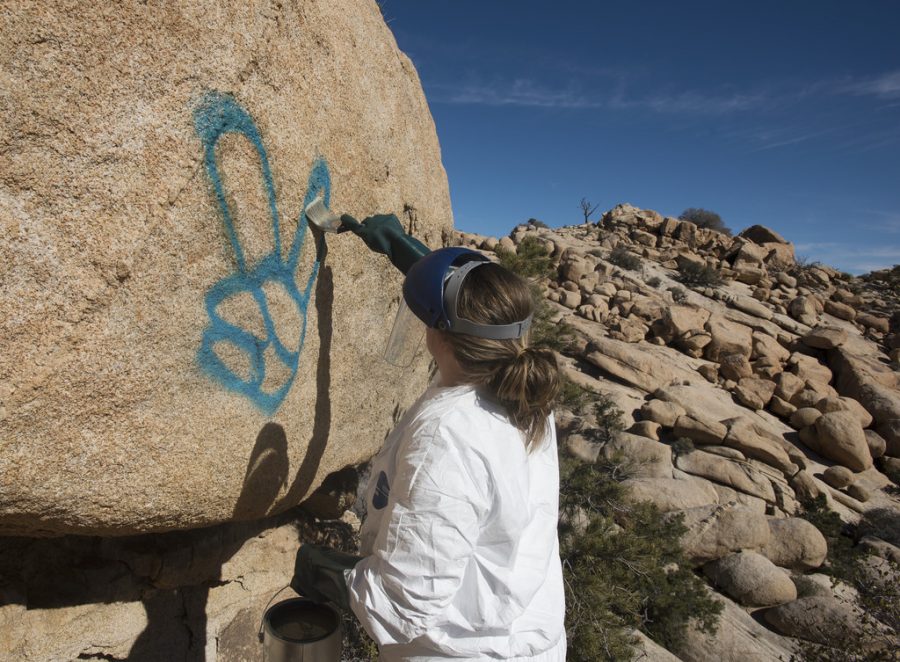National parks vandalized because of govt. shutdown
A park ranger is applying elephant snot graffiti remover to a rock that has been vandalized with spray paint amid the government shutdown. Removing graffiti is tedious work that requires training, approved cleaning materials, and heavy equipment.
January 23, 2019
As of Jan. 9, the 2018-2019 U.S. government shutdown is now the longest in history, breaking the 1996 record. An estimate of 380,000 government employees have been granted leaves of absence and another 420,000 are expected to work without pay for the duration of the shutdown, halting progress in federal departments.
Unfortunately, the shutdown has impacted things on a whole other scale. It has not only deprived workers of a paycheck, but it has also claimed a new victim: the environment.
The shutdown has caused many national parks to close down. With no law enforcement or park service officials patrolling the area, many parks have become the targets for vandalism. One of the more significant incidents is the destruction of Joshua Trees and natural sceneries at Joshua Tree National Park in southern California.
Throughout the course of the shutdown, only a handful of workers remain at the park each day, making it difficult to take care of and maintain order among the vast stretches of desert.
According to documents published by the Interior Department, the shutdown impacts national parks across the country. Most services have been halted except those who are needed to protect human life. Over 21,000 employees are absent from their jobs. Even for the people who still come to work, it is still unclear how many employees are working without pay.
In the past weeks, photos have been surfacing on social media that show fallen Joshua trees lying in the dirt. These draw attention to how the government shutdown has affected the prosperity of our national parks.
Park service officials confirmed that visitors are to blame for the fallen trees and not natural causes.
“While the vast majority of those who visit the Joshua National Park do so in a responsible manner, there have been incidents of new roads being created by motorists and the destruction of Joshua trees in recent days,” the Park Service statement said.
Unwarranted visitors have traveled into the park and cut down the trees so they can illegally off-road and camp in sensitive areas where visitors are banned. Not only have they destroyed trees to create these new off road trails, but they have also ruined untouched desert land and left spray painted graffiti art on ancient rocks.
According to The New York Times, park officials issued a statement on Tuesday, Jan. 8 saying that due to the damage, the park has suffered “sanitation, safety, and resource protection issues” since the shutdown began.
The viral photos have sparked outrage over the destruction, blaming the government shutdown for all the damage. Amid the elongated partial government shutdown, national parks still remain understaffed and vulnerable to unruly visitors who wish to cause harm.


